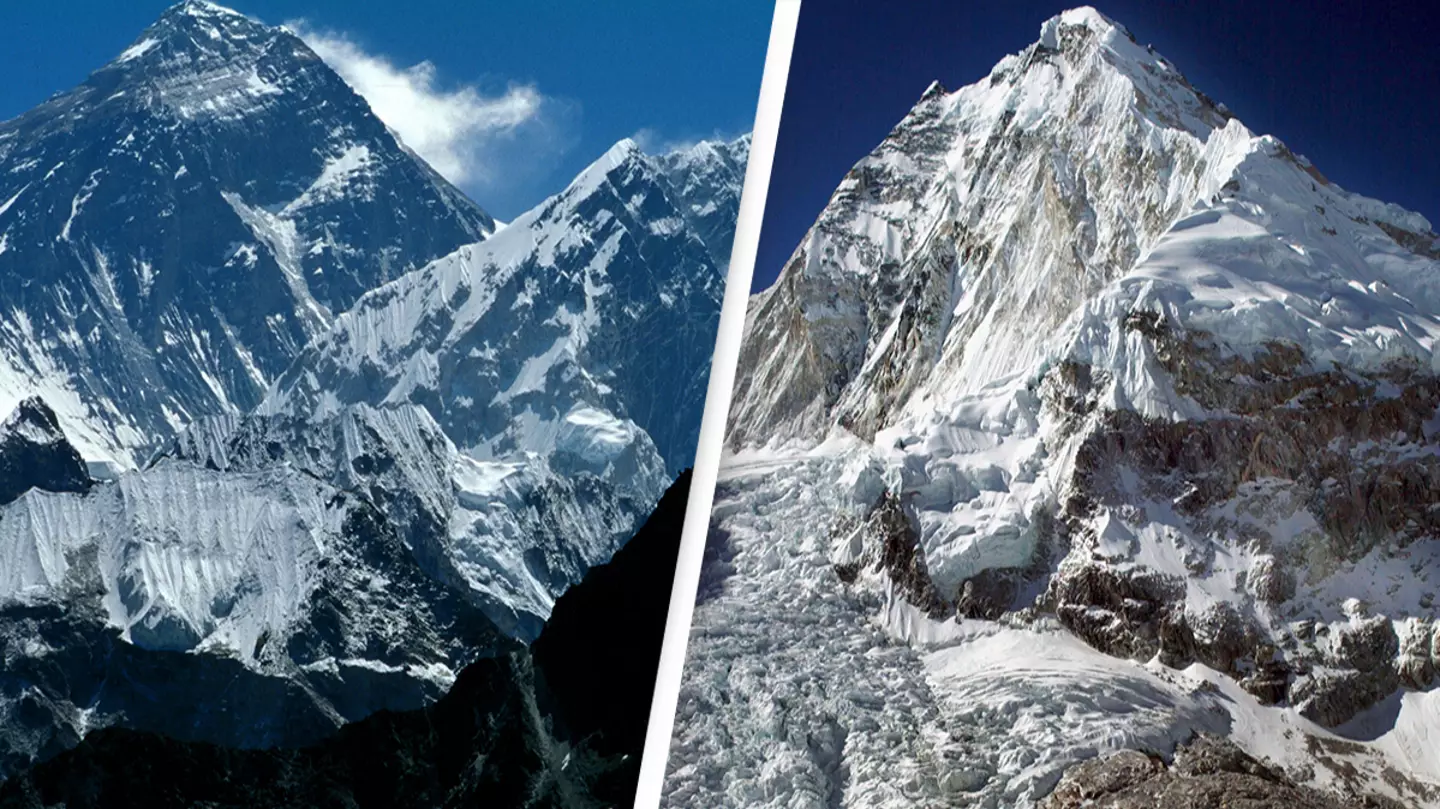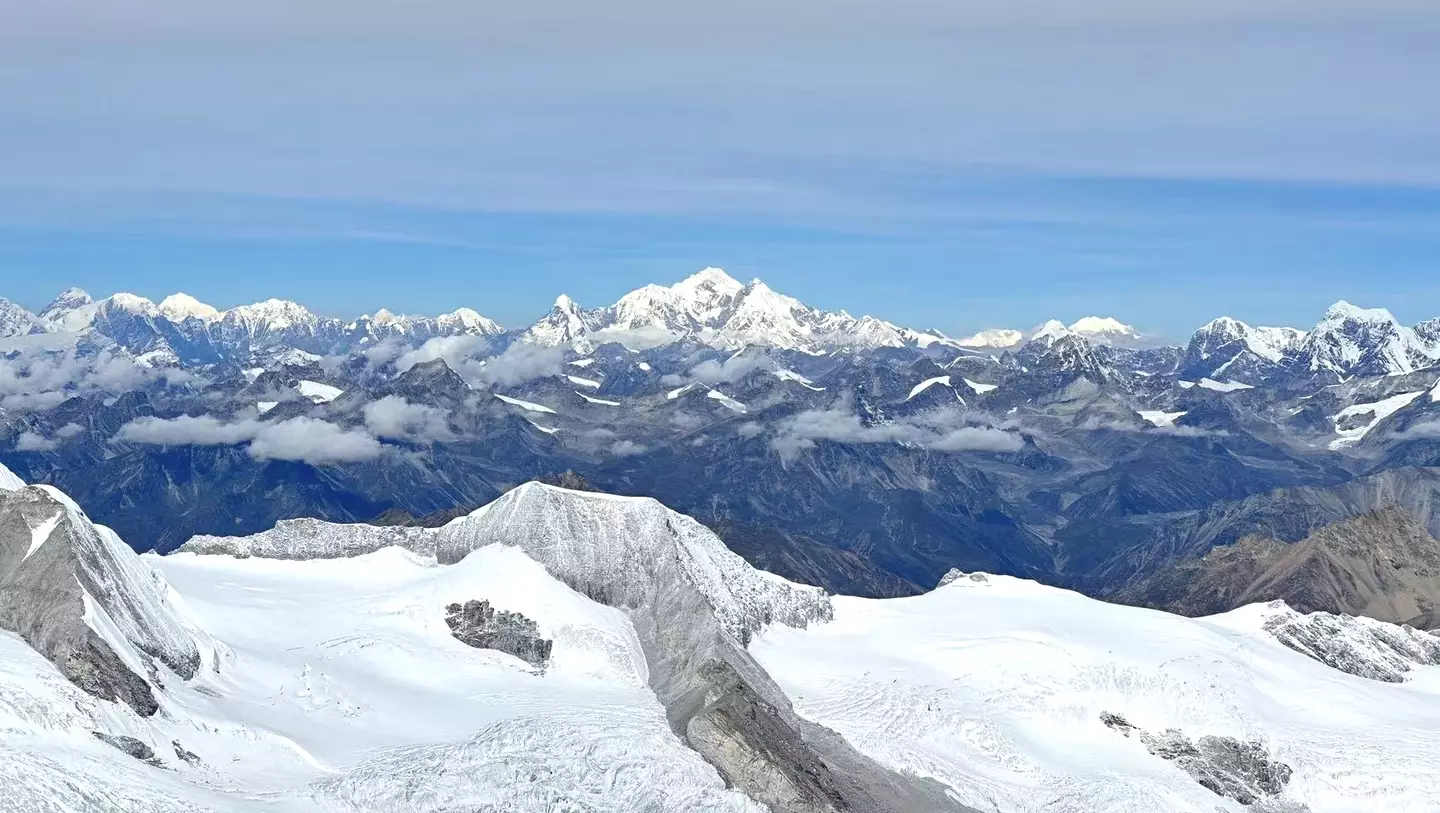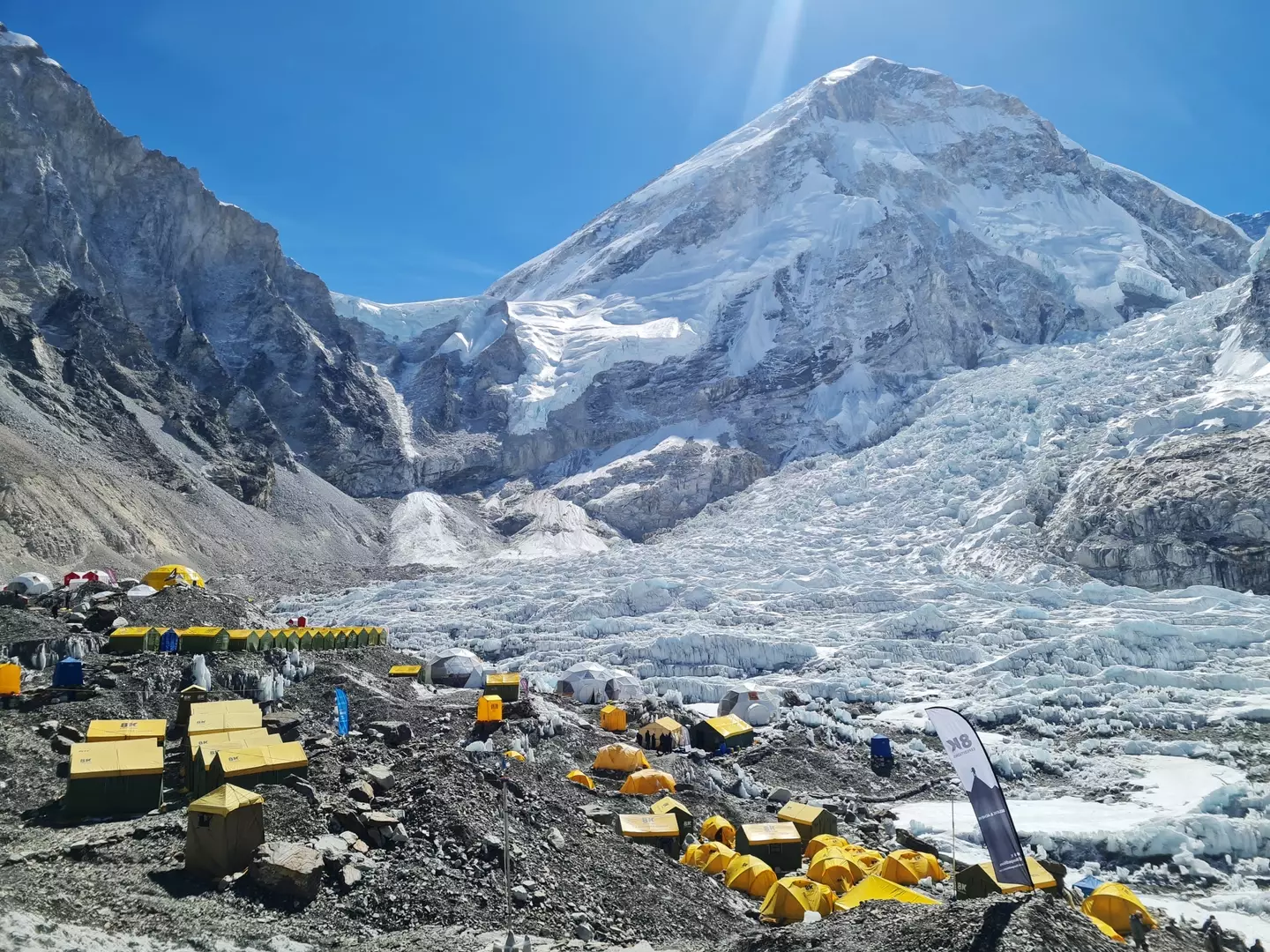
As the ice on Mount Everest melts at an alarming rate, hundreds of bodies of climbers who died attempting to climb the summit are being revealed.
It's believed Mount Everest has lost 180ft of ice in recent years.
While the ice on Mount Everest's highest glacier took 2,000 years to form, experts have issued a stark warning that it could completely disappear in just 25 years.
Discussing Everest's South Col Glacier (SCG), a 2022 report said: "Thinning could occur in 25 years, over 80 times faster than it took to form the ice now exposed at the surface of SCG.
"Estimated contemporary thinning rates… indicate several decades of accumulation may be lost on an annual basis now that glacier ice has been exposed."
Advert
Now, as Mount Everest continues to thaw, search teams have used this as an opportunity to scale the 29,032-foot Himalayan peak to a bid to search for lost hikers who have died on the mountain.

Since the search began earlier this year five bodies have so far been discovered, CBS reports.
Two bodies had been preliminarily identified, pending 'detailed checks' for confirmation, but all five currently remain unnamed.
Advert
The search team is made up of 12 military personnel and 18 climbers who are working as part of Nepal's mountain clean-up campaign on Everest.
The team are working on adjoining peaks Lhotse and Nuptse in the hopes of locating more fallen hikers.
The clean-up campaign has been running since 2019, with this year's expedition having started in April.
As well as collecting the deceased, trash is also an ongoing issue on Mount Everest.
Advert
Between 2019 and 2023, 110 tons of waste were collected as part of the annual clean-up efforts, CNN reports.
Aditya Karki, an officer in Nepal's army who led the search, told the AFP news agency: "Because of the effects of global warming, (the bodies and trash) are becoming more visible as the snow cover thins."

There's a part of Mount Everest that's often referred to as the 'death zone'.
Advert
Experiencing such high levels of altitude can cause havoc on our bodies, in some cases proving fatal.
When climbers reach 'the death zone', it's said that they'll be surviving on just one-quarter of the oxygen one would need at sea level. To compensate for this, the body will start producing more hemoglobin than usual.
Too much hemoglobin can cause a person's blood to thicken however, which can put them at higher risk of a stroke.
There's also risk of experiencing hypoxia. This happens when your brain doesn't receive enough oxygen.
Advert
Hypoxia causes brain swelling and makes it difficult to concentrate and is likely to trigger vomiting and sickness.
However, the BBC reports that below one percent of people who climb beyond Everest's base camp lose their lives.
Topics: Climate Change, Environment, World News, News